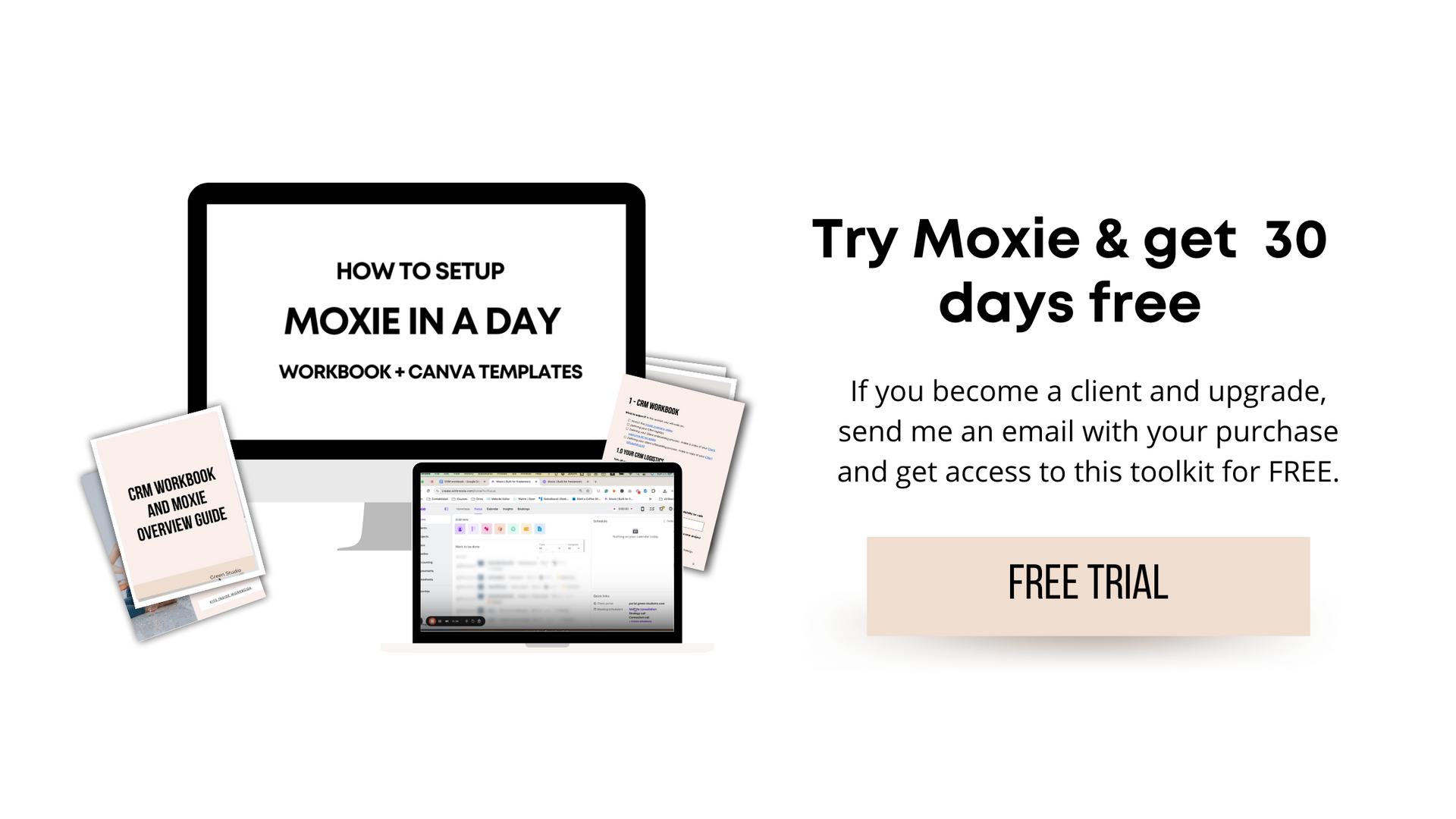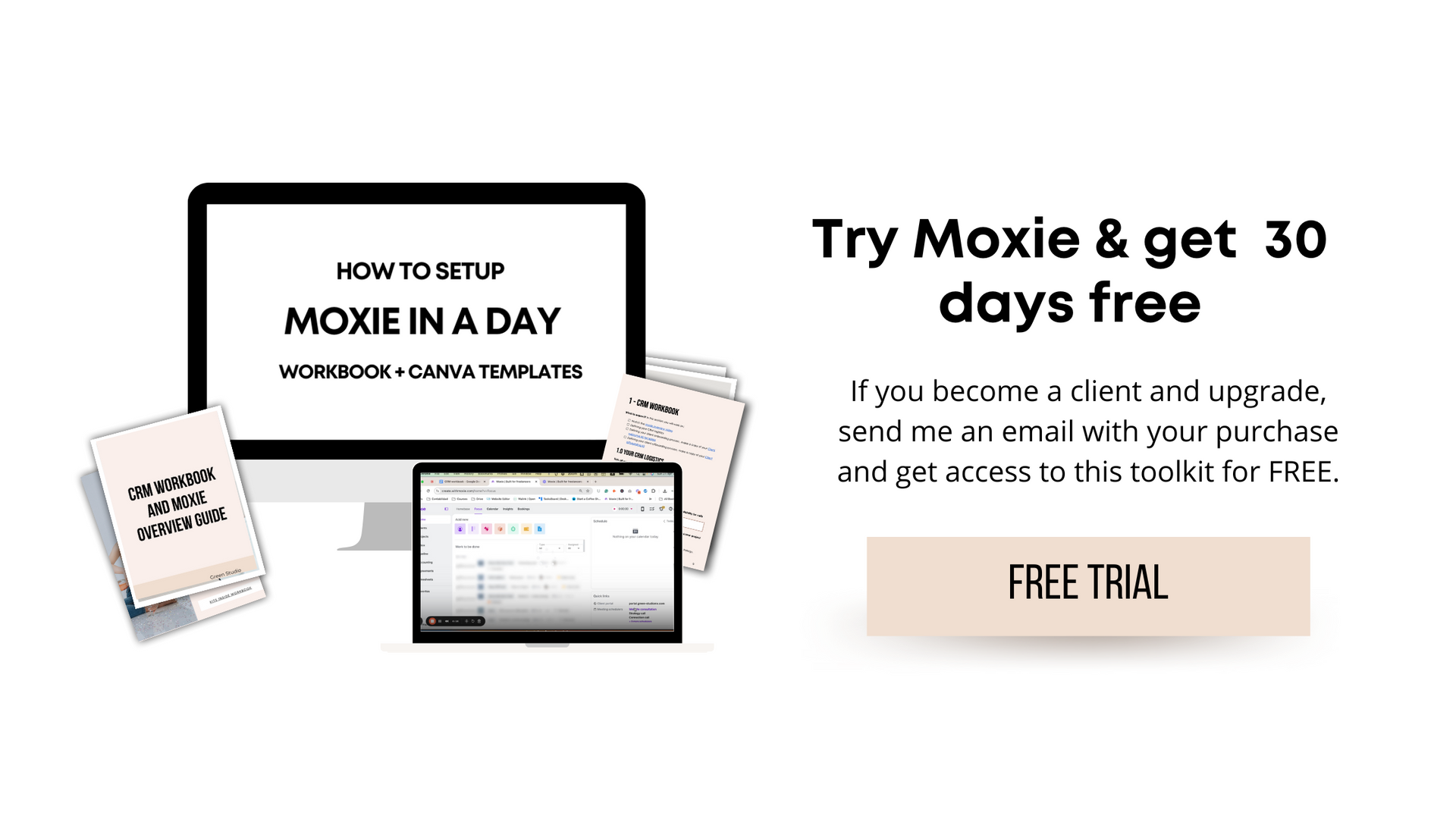Top 10 Dubsado alternatives and my favorite one out of this list
In today's digital world, having the right CRM tool can make all the difference in how we streamline our business and manage our relationships with our clients. But if you've tried Dubsado and it just didn't meet your expectations, or perhaps you find it clunky and overwhelming to set up. Don't worry, because I've got you covered. In this article, I'll introduce you to the top 10 Dubsado alternatives for freelancers and solopreneurs, with my hand-picked favorite choice that will help you make your CRM decision today and stop overthinking it.
It's natural to feel hesitant about switching from a familiar platform like Dubsado. After all, a ton of freelancers are using it and switching can be intimidating. However, it's important to remember that finding the right CRM tool is crucial for your business growth and success. By considering these alternatives, you open yourself up to new possibilities and potentially find a solution that better aligns with your needs.
What exactly is Dubsado?
Dubsado is a popular CRM (Customer Relationship Management) tool designed specifically for creative entrepreneurs, freelancers, and small businesses. It offers features such as client management, project tracking, invoicing, contracts, and more. While many users appreciate its functionality, others have found it lacking in certain areas, or like me clunky and awkward to set up.
I like to think of Dubsado like the Wordpress of CRMs. What I mean by this is that both Dubsado and Wordpress are platforms that are like dinosaurs in the online world, they’ve been around for a while, but that doesn’t mean they are still the best solution. Fortunately there are more modern tools that outperform a ton of features and give you a simpler way to DIY the setup without pulling your hair.
The most common downsides of Dubsado
Although Dubsado has its merits, there are several common downsides that users often encounter. Some of these include:
1. Complexity:
Dubsado can be overwhelming to set up, especially for those who are not tech-savvy. The learning curve can be steep, and the initial setup process may take longer than expected.
2. Limited customization:
While Dubsado offers some customization options, some users have reported feeling restricted in terms of design and branding. This can make it challenging to create a personalized client experience.

The top 10 Dubsado alternatives for freelancers and solopreneurs
Now let's explore the top 10 alternatives that offer similar functionality.
1. Moxie:
Moxie
(affiliate link) is a user-friendly CRM tool designed specifically for small businesses and freelancers. It offers features like project management, invoicing, time tracking, and more. With its intuitive interface and customizable templates, Moxie is the best choice to replace Dubsado and I’ll cover more about why down below.
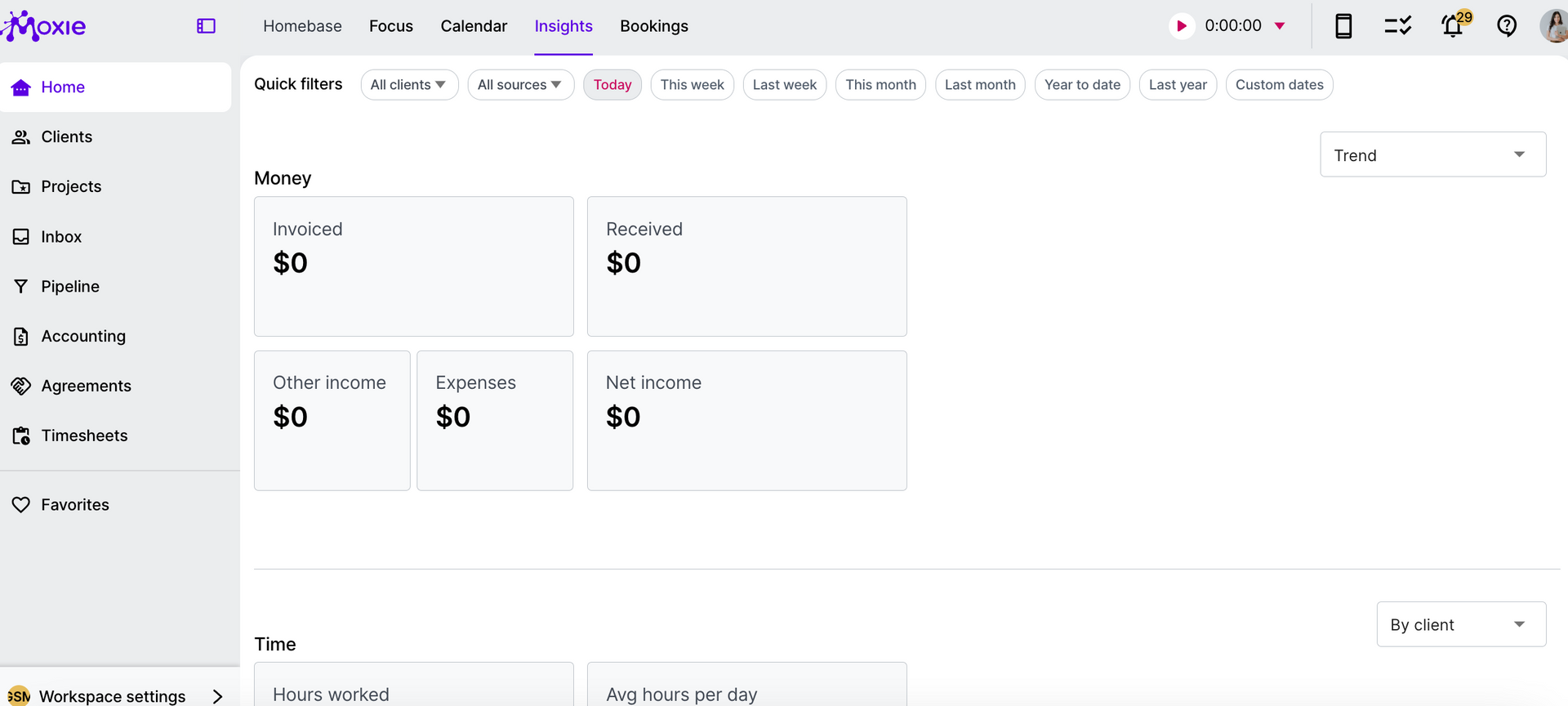
2. Honeybook:
Honeybook
is another popular choice among creative entrepreneurs. It combines CRM features with streamlined project management tools, making it easy to handle contracts, payments, and client communication all in one place.

3. Hello Bonsai:
Hello Bonsai
is a comprehensive suite of tools tailored for freelancers and solopreneurs. It includes features such as proposals, contracts, invoicing, time tracking, and expense management. Its clean interface and automation capabilities simplify your workflow.
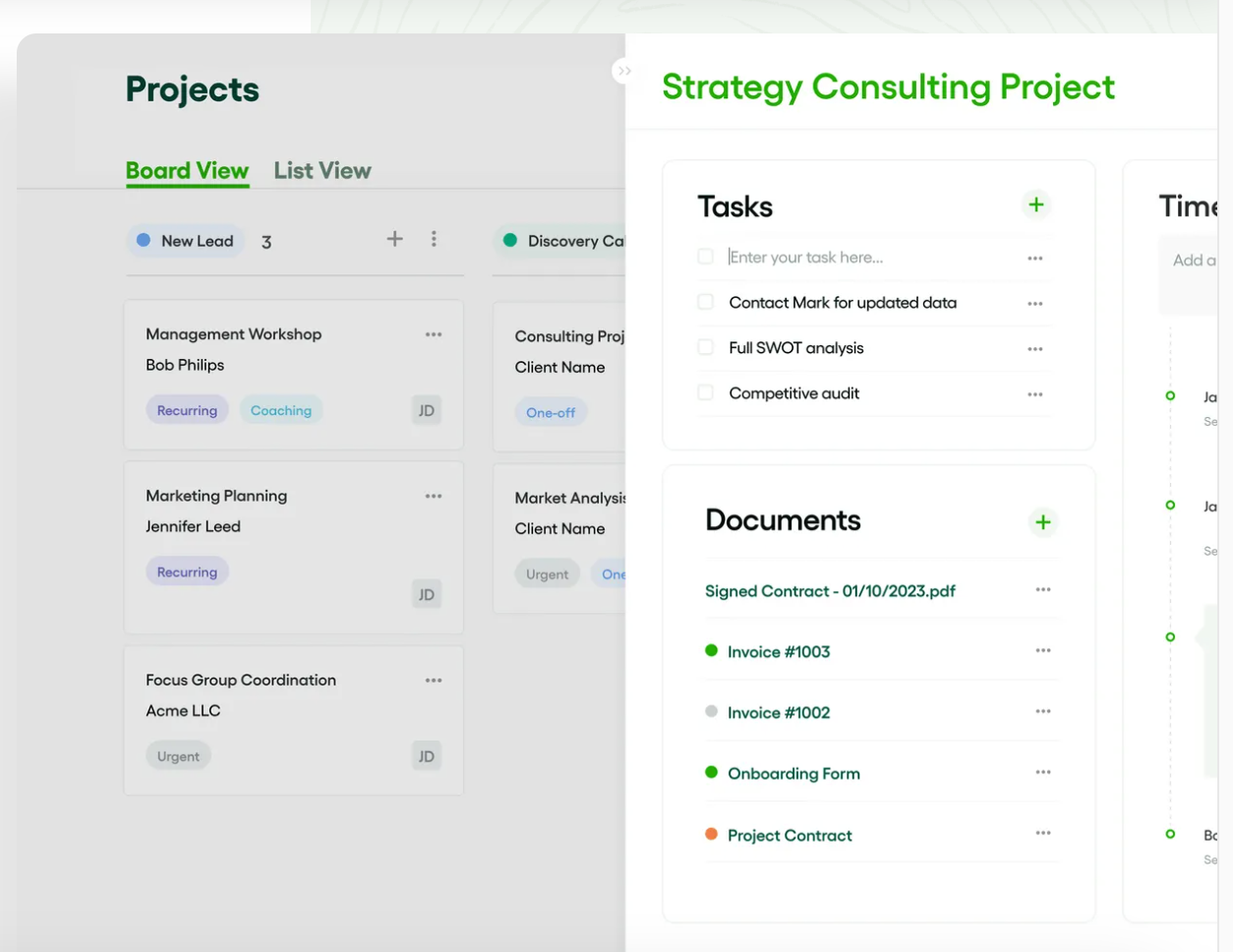
4. Clickup:
While primarily known as a project management tool,
Clickup
also offers CRM functionalities that can be customized to fit your business needs. It allows you to manage clients, track projects, and collaborate with team members efficiently.

5. Plutio:
Plutio
is a powerful all-in-one CRM platform that caters to freelancers and small businesses. It offers features like project management, invoicing, proposals, time tracking, and more. Its sleek design and user-friendly interface make it a top choice for many.
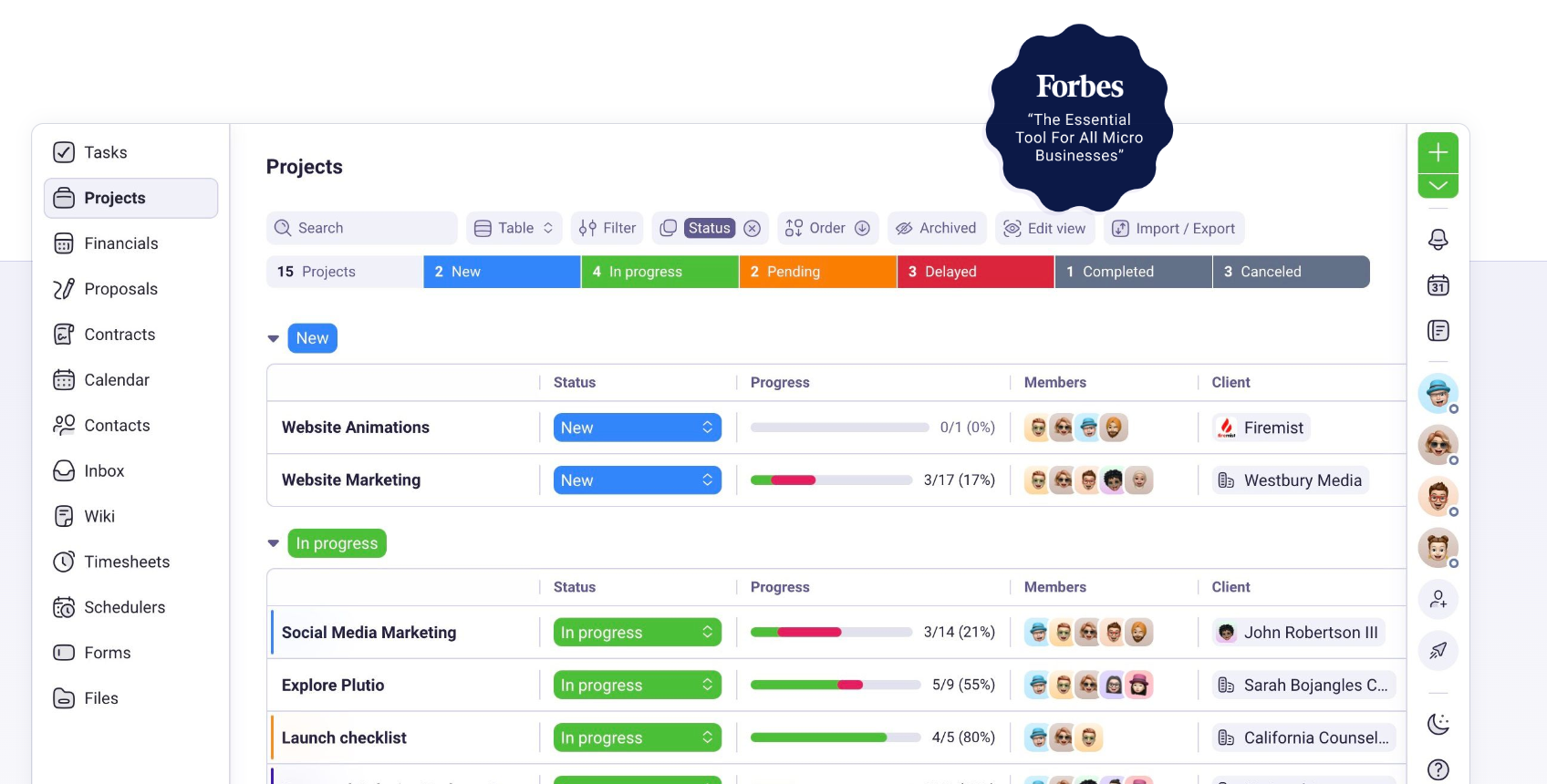
6. 17hats:
17hats
is an integrated CRM and business management solution designed specifically for creative professionals. It provides features like lead capture, contract management, invoicing, and email automation to streamline your workflow.
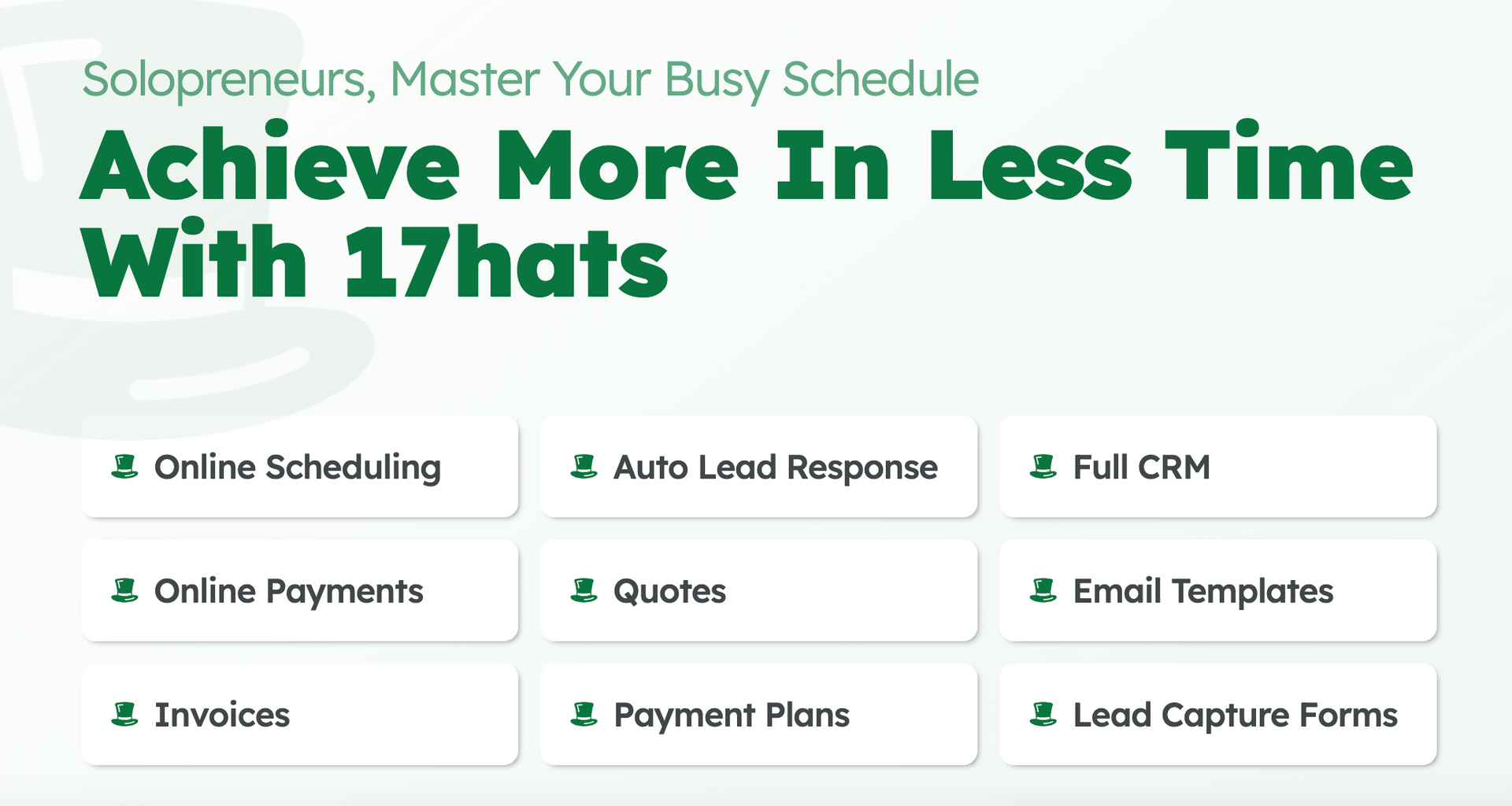
7. Trello:
While not a traditional CRM tool,
Trello
can be adapted to serve as one with its customizable boards and lists. You can create workflows, track client interactions, and manage projects effectively using this flexible platform.
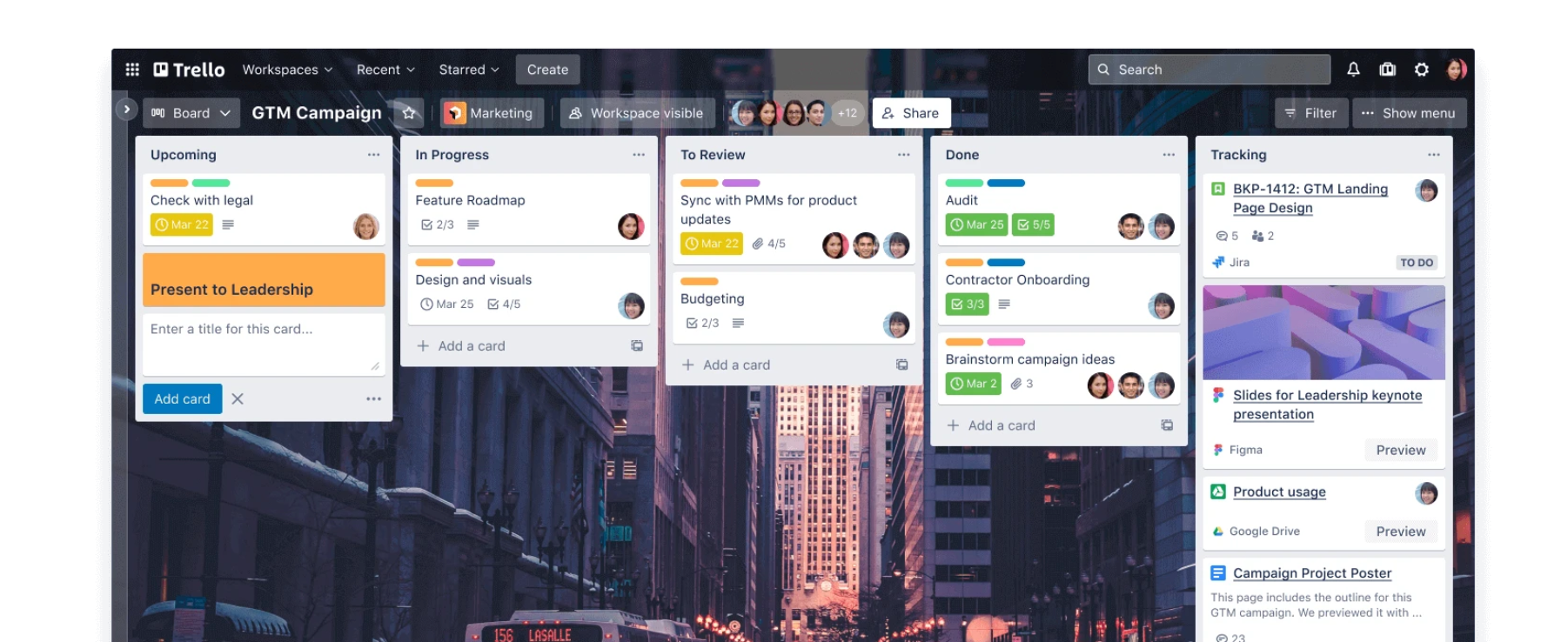
8. Notion:
Notion
is a versatile productivity tool that can be tailored to function as a CRM system. With its customizable templates and database capabilities, you can create a personalized CRM solution that fits your unique requirements.

9. Zoho:
Zoho offers a range of CRM solutions suitable for freelancers and solopreneurs. From contact management to sales automation, Zoho provides comprehensive features but it’s almost at the bottom of this list because it’s made for bigger companies.
10. HubSpot CRM:
HubSpot CRM is a popular choice for businesses of all sizes. It offers robust features such as contact management, email marketing automation, lead scoring, and analytics to help you grow your business effectively. It’s the last on the list due to the level of complexity and robust CRM features for bigger teams.
Why I switched from Dubsado to Moxie
As someone who understands the challenges faced by online service providers and being a solopreneur with a small team, I made the switch from Dubsado to Moxie after experiencing its clunky setup. While I did appreciate Dubsado workflows and automations, I always have a rule that when a tech tools takes me hours of research and documentation to go through, it’s not worth my time.
Moxie's user-friendly interface, extensive customization options, and SIMPLICTY made it the perfect choice for my business needs. I set up the basic features in just one day, and then after that I have been adding to my workflows and processes as I have some spare time here and there, and they have an amazing support community filled with nerds like me that help each other out with questions about the platform.
Why is Moxie better than Dubsado?
Moxie addresses the downsides of Dubsado by offering a simpler setup process, enhanced customization options within the client portal, and a more cost-benefit pricing structure. It allows me to create a unique client experience while streamlining my business operations.
How to set up Moxie in 3 simple steps today
Setting up Moxie is quick and easy. Follow these three steps to get started:
1. Plan your CRM logistics:
Determine how you want to organize your clients, projects, and communications within Moxie. Create custom fields, tags, and workflows that align with your business processes.
2. Plan your onboarding process:
Define how you will onboard new clients using Moxie. Set up templates for contracts, proposals, and invoices to streamline the onboarding experience.
3. Plan your offboarding process:
Consider how you will handle client offboarding within Moxie. Create automated processes for sending feedback surveys, generating final invoices, and archiving client data.
Finding the right CRM tool is essential for simplifying your client experience
While Dubsado may not be the perfect fit for everyone, there are several alternatives available that offer similar functionality with added benefits. Among them, Moxie stands out as my favorite choice due to its user-friendly interface, extensive customization options, and affordability.
Ditch Dubsado and switch to Moxie with a free 30 day trial
Moxie offers a free trial period so you can test out the software and see if it aligns with your business needs. Start your free 30 day trial with my affiliate link and if you choose to upgrade just come back and send me an email at mkt@green-studiomx.com so I can send you this Moxie in a day toolkit with a Moxie overview video + a CRM setup workbook so you tick off all the tasks that need to be completed to define your CRM logistics, onboarding and offboarding process.
Want to keep comparing tools?
- The best CRM for solopreneurs and freelancers
- Dubsado vs Honeybook vs Hello Bonsai vs Moxie
- The best website platforms for service providers
- 22 stress-free business tools for entrepreneurs
- Showit vs Squarespace
- Mailerlite vs Flodesk

* AI Disclosure: This content may contain sections generated with AI with the purpose of providing you with condensed helpful and relevant content, however all personal opinions are 100% human made as well as the blog post structure, outline and key takeaways.
* Affiliate Disclosure: Some of the links on www.nataliamaganda.com may contain affiliate links meaning that I will get a commission for recommending products at no extra cost to you.

hello! i'm natalia
Latina, web design expert for mental health professionals.
I help ambitious life coaches, therapists and holistic leaders amplify their magic, gain visibility, and simplify their marketing efforts through strategic web design and content.





